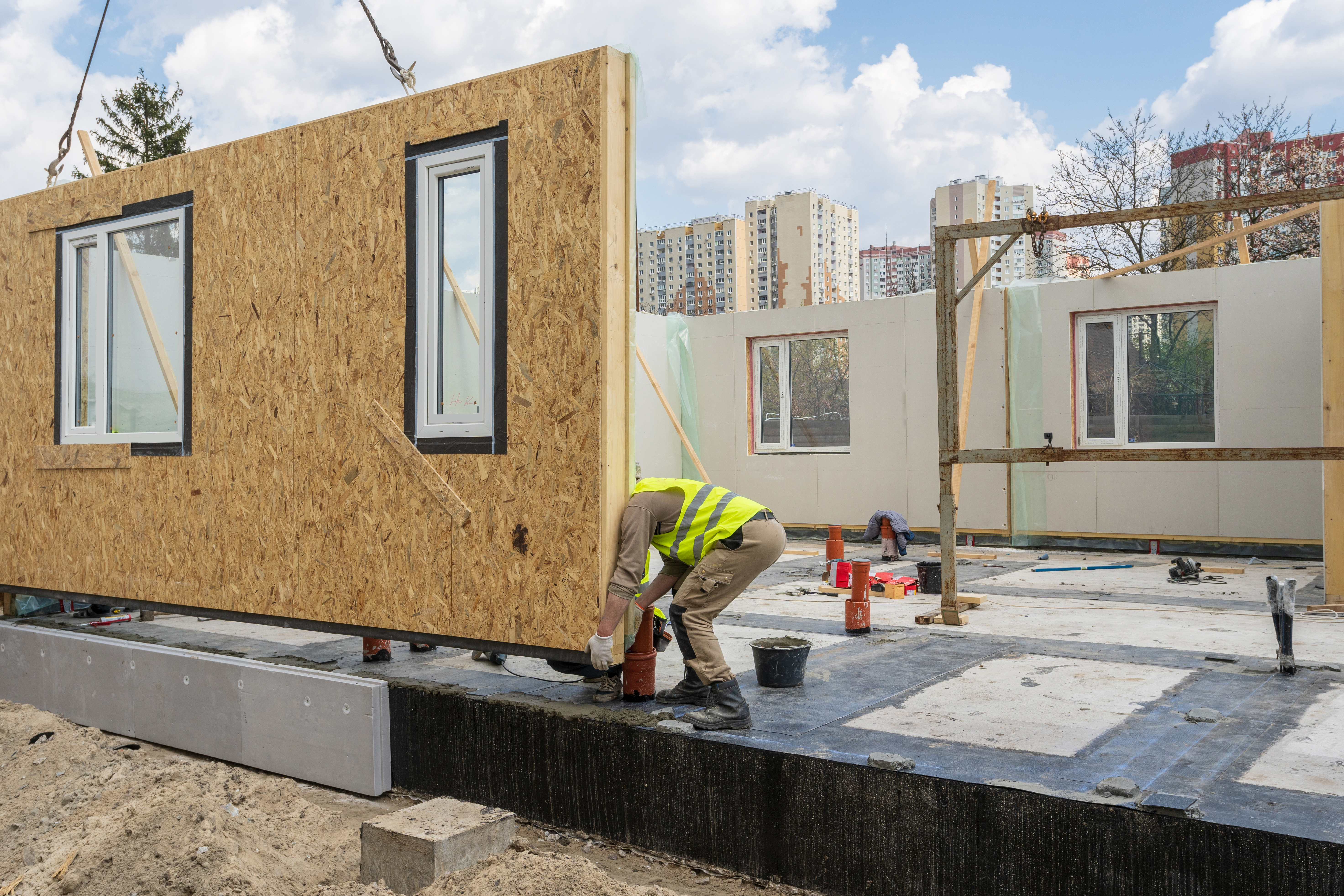Dispelling the myths of MMC in the public sector
It feels as though we’re on the cusp of a boom in the adoption of modern methods of construction (MMC) in public sector housebuilding.
Demand will be driven partly by the Government; Homes England has specified that, as part of its latest Affordable Homes Programme, its strategic partners must deliver at least 25% of its housing using MMC.
That means every home within that 25% must have a pre-manufactured value (PMV) of 55% or above – that is, the value of the property produced through MMC processes.
On top of that, the Ministry for Housing, Communities and Local Government (MHCLG) is setting up an MMC Task Force, with £10million of seed funding, to accelerate its adoption across the sector.
At LHC, we’re also seeing demand driven directly by local authorities and other registered providers themselves – for example, our North and Central England local hub CPC has recently helped both Sheffield and Middlesbrough councils deliver domestic and non-domestic projects respectively.
This is perhaps thanks to a growing recognition of the cost and speed benefits, but also due to the increasing pressure to deliver more new homes while simultaneously having to retrofit for safety and energy improvements.
But despite all of this, there is still trepidation within the sector to be the first, the “early adopters”. I believe this could be down to a misunderstanding of the barriers to entry into MMC, and complications with public sector procurement constraints.
The Government is clearly recognising the benefits of MMC in the face of its target to deliver 300,000 new homes a year. In the face of this, there’s a desperate need to accelerate local construction. MMC buildings can be delivered much quicker than with traditional building methods, resulting in more homes and less disruption to the local area.
For example, the project I mentioned in Sheffield saw residents move into their new homes less than five months after the building modules were lifted into place.
MMC will also help to meet the forthcoming revisions to the Building Regulations, both from the point of view of safety and of energy efficiency. More of the process is carried out in factory-controlled conditions, ensuring a consistency and quality of product with fewer snagging issues, and closing the performance gap between as-designed and actual energy efficiency.
A recent report published by CAST Consultancy and HTA Design indicates that offsite technology can result in a 40% reduction in emissions when compared to traditional construction, with a dramatic improvement in embodied CO2 emissions.
So, why the remaining concern over MMC?
Firstly, I think many people in the sector see it as an expensive luxury, given the initial project costs. Some feel that because of this, it’s an unviable option.
But in reality MMC homes have lower overall lifecycle costs – project delivery is much faster, so the sale or rent revenue starts to come in much earlier. They also benefit from reduced maintenance costs thanks to the quality-controlled manufacturing process.
We can drive further reductions in cost through economies of scale – with more housing providers and developers procuring MMC, we’ll expect costs to come down as the market matures. We may see this start to happen as the Affordable Homes Programme progresses.
Secondly, there’s a perception that public procurement constraints limit a local authority’s ability to develop the right relationships required for MMC. The view is that because a consistent pipeline of work is required for the manufacturers, local authorities are not in a position to create that long-term demand for one supplier.
There’s also the concern that MMC housing schemes are too complex to manage, with more stakeholders and more technical areas to keep on top of.
However, through framework agreements, contracting authorities are able to manage the process much more easily through a single point of contact and with the aid of technical expertise across all RIBA Plan of Work 2020 stages.
Framework agreements, such as CPC's Offsite Construction of New Homes (NH2), therefore allow the necessary relationships to flourish over a longer-term period, helping to set out an integrated supply chain.
We’ve also found in the past that some local authorities have struggled to deal with the unique challenges associated with MMC, in particular, understanding project risks and ensuring smooth delivery. In response, we developed the Offsite Project Integrator framework to provide technical support at every stage, making available specialist consultants to help make the business case for MMC housing.
So, we are seeing local authorities starting to look past these barriers to entry and realise the value MMC provides; in fact, our MMC framework has already led to a pipeline of nearly 5,000 homes across 133 projects. I think we’ll start to see this number increase ever further, not just because of the Government’s ever-growing preference for MMC, but also because housing providers are seeing all of the benefits that MMC brings.
But, it should be recognised that over-stretched local authorities need proper resourcing and technical and practical guidance, as well as help to recognise where the value for money is to be found. This is where LHC’s experience, local procurement expertise and MMC knowledge can help.
MMC is undoubtedly the future for house building, and local authorities can help to lead the way.


